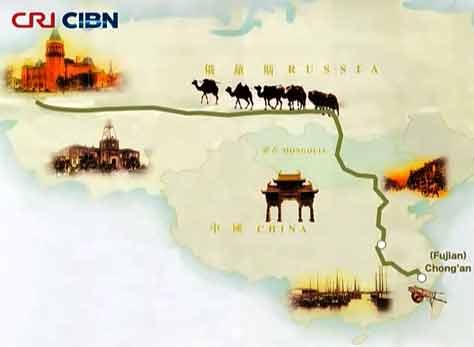After a first glimpse at Indonesian history, mostly on how tea came to it and how the Dutch implemented different agricultural policies (http://teaconomics.teatra.de/2014/06/24/an-unexpected-journey/), it is time to see if Indonesia was such a big tea producing tea country and what happened to it.
As for my previous article on this topic, I did some research but I had troubles with some raw numbers or general statements that don’t say if they are related to quantity or value. In the end however I managed to find some raw data and information through all the colonial period and early independent one and this is what I will try to present here.
In 1885; sugar, coffee and tobacco represented 72% of the total value of the different exportations from the Dutch East Indies but tea was growing up fast as in 1928, 17% of the tea produced in the world came from these islands and in 1929, tea was the fifth export (in value) before tobacco and coffee.
However, what is unusual is that at that time the main market was not the “motherland” (a common thing for all colonial power) but London with the British houses ruling the tea market in Batavia. (1) Was it pragmatism from the Dutch with acknowledgement of where and who was the market or just a manifestation of the British supremacy over this trade?
From hints I gathered, it would say that the second option is probably the most realistic one since the main problems faced by the Dutch prior and during World War I was the irregular quality of the tea being harvested, which was a problem for their sales to America and Australia, where the Dutch had launched from 1913 on a marketing campaign to sell their products. (2)
This shows that they tried to get around and find new markets.
Assam teas were introduced in 1878 and quickly became the only ones used, probably because these plants were more efficient and also because the London market was the one targeted at that time.
However, things only heated up in 1900 when European companies (including British ones) began investing in bigger and better lands, resulting in a quick growth between 1919 and 1931 and a good reputation of some teas like those of Permantag Siantar (3)
The production changed from year to year and in 1921, there was a huge crisis (without any indications of what might have happened) that made the production dropped as showed in the table below (and don’t blame me for the wrong figures, I just copied them).
| in kilos |
1919 |
1920 |
1921 |
| Java |
42,500,000 |
47,000,000 |
28,000,000 |
| Sumatra |
4,000,000 |
5,000,000 |
4,000,000 |
| Total |
46,500,000 |
52,000,000 |
32,000,000 |
Tea production in the Dutch East Indies (1919-1921) (2)
But where did they go?
| in kilos |
1919 |
1920 |
1921 |
| Netherlands |
25,136,000 |
16,865,000 |
11,203,000 |
| United Kingdom |
12,356,000 |
11,718,000 |
6,638,000 |
| Australia |
7,262,000 |
8,753,000 |
9,786,000 |
| USA |
2,278,000 |
3,475,000 |
2,537,000 |
| Canada |
634,000 |
796,000 |
38,000 |
| Europa |
722,000 |
36,000 |
17,000 |
| Singapore |
466,000 |
452,000 |
60,000 |
| China |
1,117,000 |
35,000 |
0 |
| Others |
275,000 |
452,000 |
472,000 |
| Total |
50,246,000 |
42,582,000 |
30,751,000 |
Tea exportations from Java, 1919-1921 (2)
| in kilos |
1919 |
1920 |
1921 |
| Netherlands |
1,729,870 |
1,165,779 |
1,450,892 |
| United Kingdom |
1,790,072 |
2,663,784 |
2,389,733 |
| Australia |
15,000 |
0 |
600 |
| USA |
64,000 |
118,344 |
0 |
| Singapore |
549,320 |
34,582 |
119,065 |
| Java |
89,591 |
12, 630 |
35,167 |
| Others |
2,652 |
25,468 |
2,336 |
| Total |
4,249,505 |
5,130,587 |
4,197,793 |
Tea exportations from Sumatra, 1919-1921 (2)
| in kilos |
1919 |
1920 |
1921 |
| Netherlands |
26,865,870 |
18,030,779 |
12,653,892 |
| United Kingdom |
14,146,072 |
14,381,784 |
9,027,733 |
| Australia |
7,277,000 |
8,753,000 |
9,786,600 |
| USA |
2,342,000 |
3,593,344 |
2,537,000 |
| Canada |
634,000 |
796,000 |
38,000 |
| Europa |
722,000 |
36,000 |
17,000 |
| Singapore |
1,015,320 |
486,582 |
179,065 |
| China |
1,117,000 |
35,000 |
0 |
| Java |
89,591 |
122,630 |
35,167 |
| Others |
277,652 |
477,468 |
474,336 |
| Total |
54,486,505 |
46,712,587 |
34,748,793 |
Tea exportations from the Dutch East Indies, 1919-1921 based on (2)
I hope I got it right as the French word was not exportations but rather exploitations, which could have something to do with the ownership but this hypothesis seems rather strange and out of place, so I kept the exportations idea.
Apart from obvious mistakes in the Sumatra figures (the figures simply don’t add) and a difference with the total produced (that could be explained for Sumatra by rounding things down), these tables are interesting and show for example that the first exportation country for tea was not the United Kingdom but the Netherlands.
The only explanation is that these figures are just the ports of destination and not the countries of final consumption (even if both can be the same), which would be consistent with the British houses ruling the market and with the usual obligation in the colonies to go through a limited set of ports, mostly located in the motherland, where products would be transformed or simply shipped to another country.
The production by the natives was stopped by this 1921 crisis as a lot of factories either stopped buying from them or paid such a low price that only the big plantations were able to keep on growing tea. (2)
What is rather interesting is that in these years, the Dutch tried to move ahead as for them, even if the United Kingdom was the best client, it was still below the pre-war level and this could mean that diversification was the way to go.
This lead to several initiatives like making rules on the tea sales regarding quality and general conditions (rules made by the Handels vereeniging (Trading Organisation) and enforced by the Vereeniging voor de thee cultuur in Nederlandsche-Indie (Organisation for the culture of tea in the Dutch East Indies), the Thee Export Bureau (Tea Export Bureau) in Batavia and the Chamber of Commerce for the Dutch East Indies in London) while making huge advertising efforts thanks to the financial support of the Vereeniging van Thee-Importeurs (Association of Tea Importers).
There were also intents to sell to new countries like Canada or other English speaking countries using the networks of the British companies already active in Indonesia. (4)
These efforts produced an increase in the exportations and therefore in the production in the following decade with the main buyer being the United Kingdom and then (but well behind) the Netherlands, Australia and Egypt.
| in kilos |
Java |
Sumatra |
Total |
| 1930 |
61,419,000 |
10,159,000 |
71,578,000 |
| 1931 |
65,922,000 |
12,060,000 |
77,982,000 |
| 1932 |
64,188,000 |
13,293,000 |
77,481,000 |
Dutch East Indies tea exportations in 1930-1932 (5)
Tea, the second export in value before World War II, suffered like all the other exportation crops first from the Japanese invasion as the number of plantations dropped (from 138 to 97) and then from the Indonesian War of Independence.
By 1948 (one year before the end of this war), only 25% of the pre-World War II plantations were still cultivated and the 1947 tea production was of 1,500 tons (1/40 of what it was before WWII). However in 1949, the situation was already improving. (6)
I don’t have any further sources or articles on what happened after but my guess (feel free to correct me if you think I am wrong or if you have more information) is that the tea plantations suffered from the different fights in the country as well as the development pattern focusing on industry and oil until tea became trendy and again …
-
Robequain Charles, Le développement économique des Indes Néerlandaises. Le rôle des capitaux hollandais et étrangers in Annales de Géoographie 1934 t.43 n°241
-
de Wildeman Emile, A propos du Théier in Revue de botanique appliquée et d’agriculture coloniale, 2e année bulletin n°16, décembre 1922
-
Robequain Charles Problèmes de colonisation dans les Indes néerlandaises in Annales de Géographie 1941 T50 n°281
-
de Wildeman Emile, A propos du Théier in Revue de botanique appliquée et d’agriculture coloniale, 4e année bulletin n°29, janvier 1924
-
Albenque A. Le commerce des Indes Néerlandaises depuis 1931 dans Annales de Géographie t.43 n°242, 1934
-
Evolution de l’économie indonésienne in Etudes et conjoncture – Economie mondiale 5e année n°2, 1950
















Recent Comments